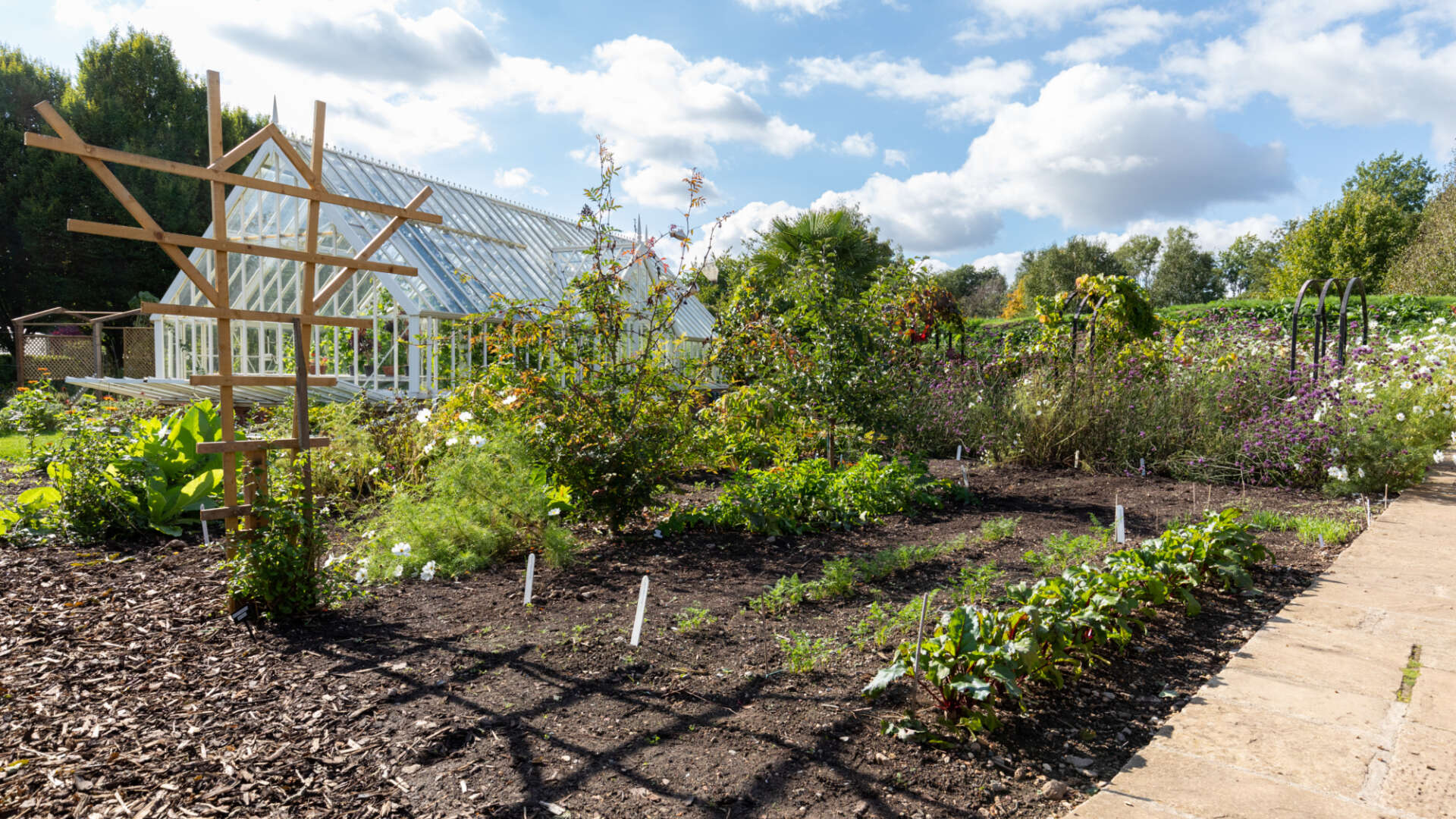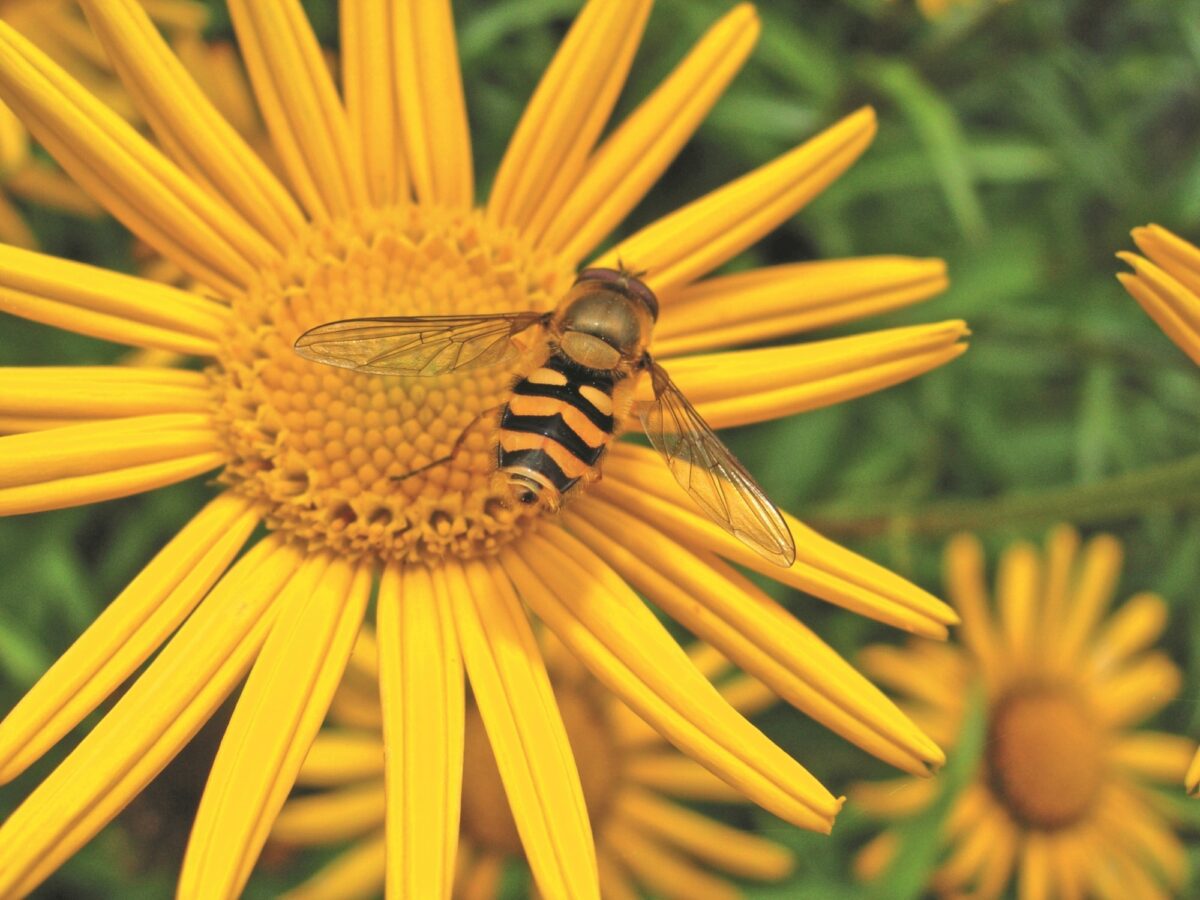Five-step beginner guide
Assess your space

Here are some things to consider when assessing your growing space:
Aspect
Working out which way your site faces can seem difficult without a compass – but checking where the sun rises (east), and sets (west) can help.
A south-facing garden will be in sun for most of the day, while a north-facing garden is in shade. Food growing can be more limited in a north-facing plot but not ruled out: leafy crops, some herbs, and bush fruits such as blackcurrants are all possible.
West facing walls will store heat during the afternoon and then act as large radiators during the night. East facing gardens can be the most problematic as plants cool down in the afternoon and overnight, then are blasted by the morning sun.
All gardens will have shady pockets and sunny corners so choose plants for these areas to match the conditions they thrive in.
Topography
Natural and artificial features can all affect how and what you plant. Steep slopes can create runoff, where you lose water, soil and nutrients. Arranging your beds and rows along the contour lines, rather than up and down the slope will reduce soil erosion.
Exposed sites can reduce the air temperature by a few degrees, slowing down growth. Creating a sheltered environment can have enormous benefits. Walls and fences tend to funnel wind currents so plant hedges to distribute air more evenly and encourage wildlife.
Consider overhanging roofs, which create ‘rain shadows’ where your plants and containers can stay dry during rain. Trees also create ‘drip lines’, an area where rainfall is channelled – so these are not good areas for delicate seedlings.
Soil structure
In a good soil structure, the soil particles clump together into crumb-sized pieces. This provides space for air and water movement.
In compacted soil, the particles are squashed together to form large plates, resulting in poor drainage and impeded root growth.
A good soil structure takes work to build up. Easy wins are to minimise digging and tread on your growing areas as little as possible. Beds can be designed so they can be reached from all sides to minimise treading. But you can also add well-rotted compost, sow green manures in summer and autumn, and use mulches across the surface to improve structure.
The size of your soil particles also matters. Find out if your soil is sandy, silty or clay as it will affect what you plant and when. You can’t change the texture of your soil, but you can work with it.
Sandy soils will drain more freely and warm up more quickly in the spring, and root crops will thrive here. Clay and silt soils will hold onto nutrients and water, so are good for growing brassicas.
And look at your weeds! Weeds are a fantastic indicator of soil conditions. Creeping buttercup, for example, is one of the surest signs of soil compaction and is often seen around gateways to fields where people and animals tread most.
Here are some more handy hints:
- Chickweed - fertile soil with good structure.
- Creeping thistle - heavy clay soil.
- Dandelion - heavy clay and slightly acidic.
- Pineapple weed - crusty surface.
- Corn spurrey – sandy, light and acidic soil.
- Perennial sow thistle – wet, neutral or alkaline soil.

Become a member
By becoming a Garden Organic member you can join the thousands of people in the UK and overseas who are already leading the movement for an organic and sustainable future for us all. And get great member benefits!